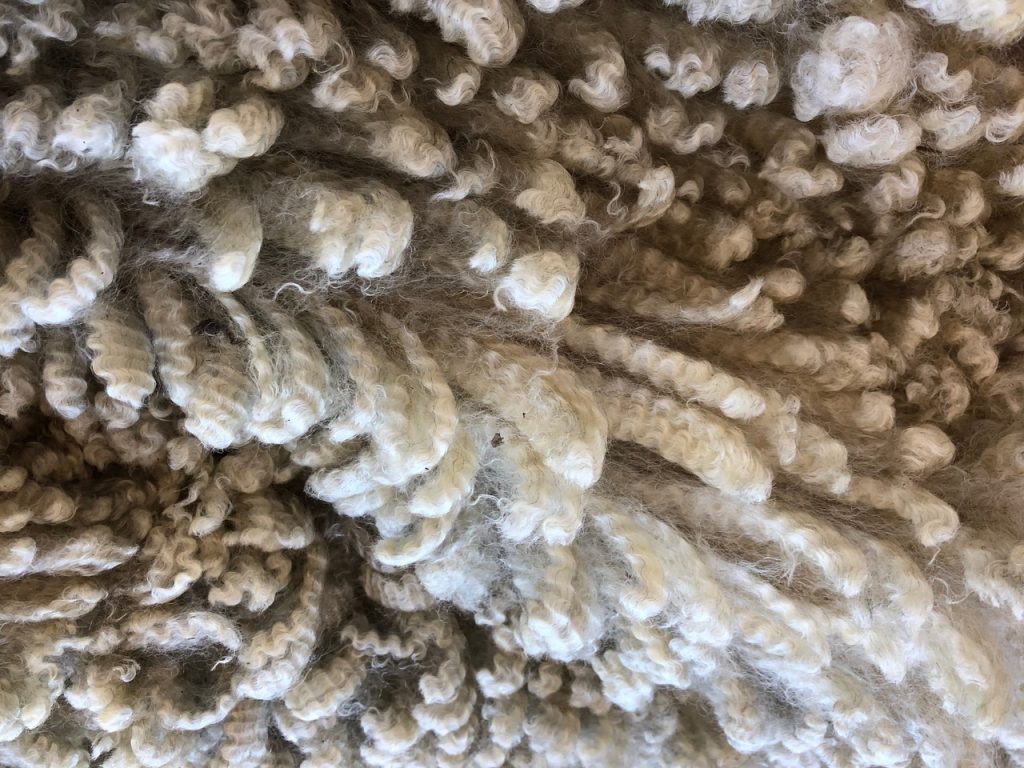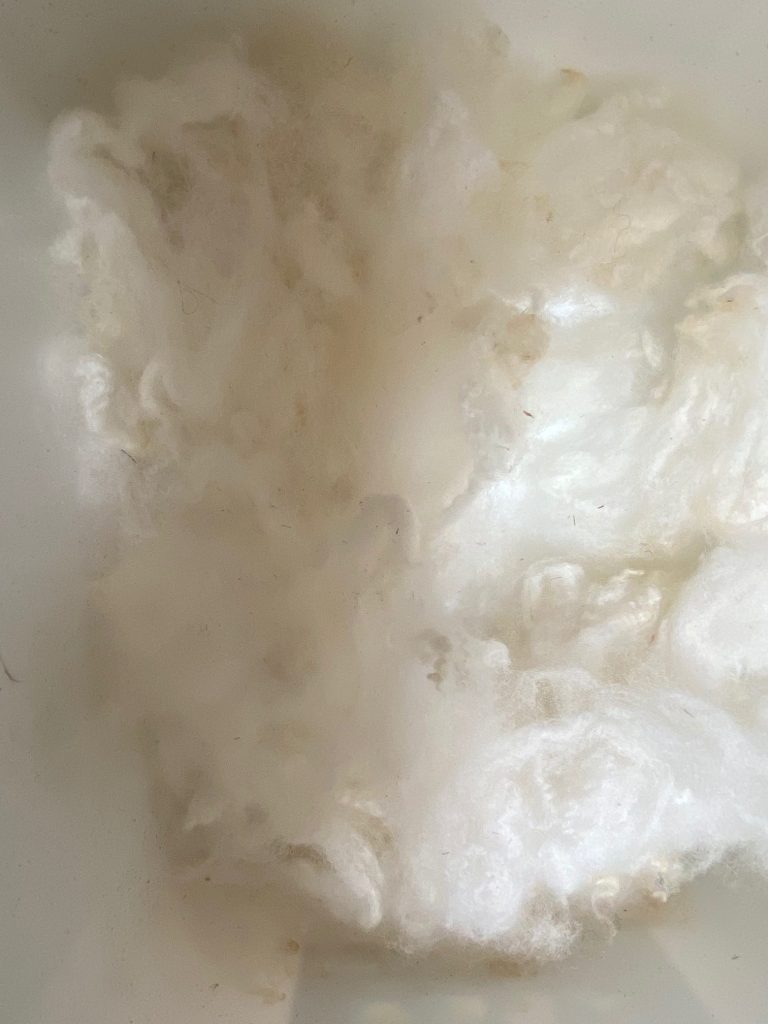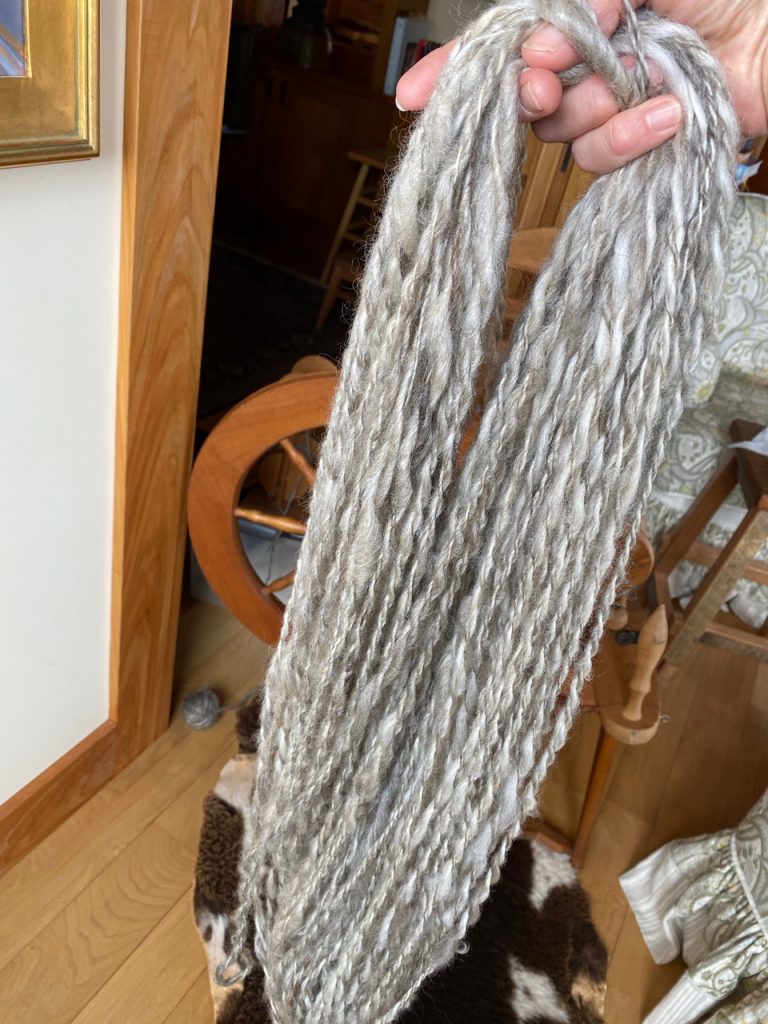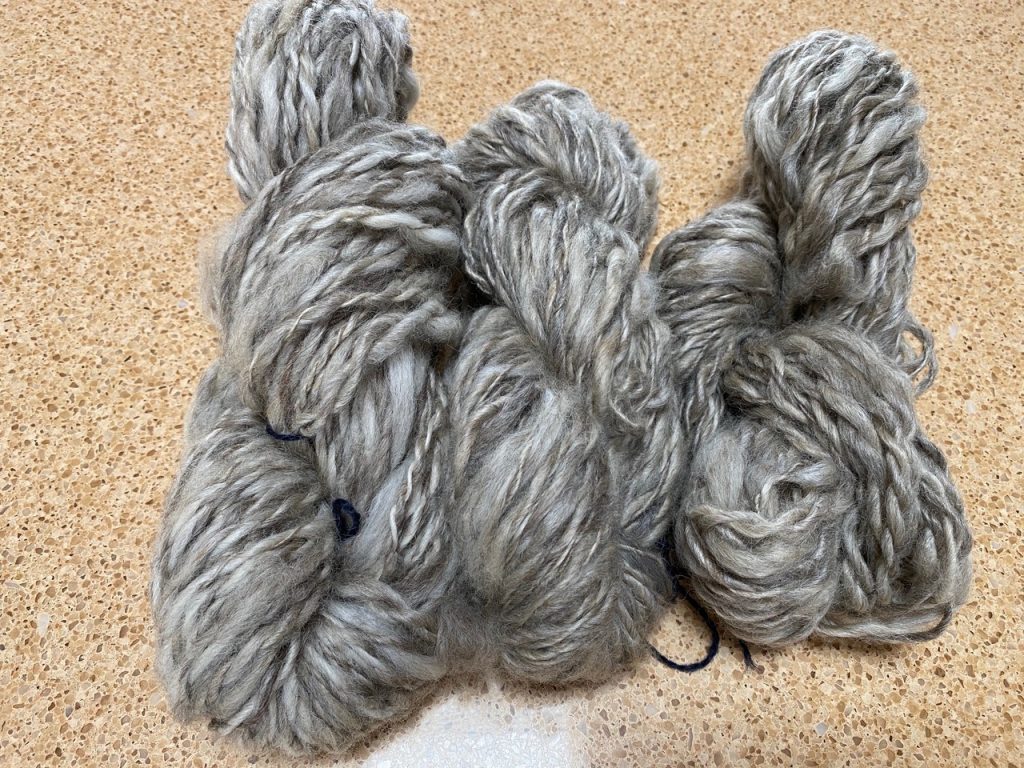
Now that I have fiber sheep, I have been eager to learn how to spin! I took a really fun beginners spinning class back in January when we could do such things, from Marlie de Swart and Mimi Lubberman in Mimi’s lovely barn-studio at Windrush Farm in Chileno Valley. Then in February, my cousin Linda brought me her spinning wheel and drum-carder when she came for lambing. Linda and I washed some skirtings from the Romneys and Corriedales, Linda taught me how to use the drum-carder, and I was off and running. The early days of the Covid epidemic will always be associated in my memory with sitting in my mud room, listening to the news on NPR while flicking and carding wool. Flicking is accomplished using a wire brush to lightly brush out the tips of the wool locks before cranking the wool onto the drum carder, which combs the wool into a long hank of “roving,” with the fibers all pointed the same way, ready to spin.


Spinning is much more fun than carding, and I save that for the evening. My first efforts with my recessive-colored Romney fleeces came out kind of chunky, but this week I started spinning some of my white Corriedale wool. Dale and Flora’s beautiful fleeces are too precious for my practice efforts, so I’ve been using “skirtings,” the edge of the fleece that gets removed because it is too poopy or full of vegetable matter. After washing and picking, the skirtings are salvageable and I can card and spin them.


Today was an exciting day because I finally refreshed my memory on how to “ply” the yarn (twist two single strands together for a final yarn product), and I plied the 3 bobbins of Romney yarn I’ve spun over the past month. It is my first effort, and a bit chunky, but I was so pleased that it was nice and relaxed and not over-twisted as beginner’s yarn can be. And it looks so beautiful! Lovely pearly grey with a nice sheen.

After plying the two strands of yarn back onto a bobbin on the spinning wheel, I wound it into a skein, using a lovely wooden contraption called a “niddy-noddy.”


Once it is wound into a skein, the skein is twisted and knotted back on itself. The next step will be to take it to my wool-processing kitchen (my old cheese creamery) and wash and hang it to “set the twist.” Then my first yarn will be ready to knit. I would up with three skeins, a total if 190 yards. I found a cute hat pattern to knit with super-chunky yarn and that will be my first project with the wool from my own sheep!

